Tricity Bendix SE501W User manual
- Category
- Sandwich makers
- Type
- User manual
This manual is also suitable for

SLIP IN ELECTRIC COOKER
SE501
PLEASE READ THIS INSTRUCTION BOOKLET BEFORE USING THE APPLIANCE
OPERATING & INSTALLATION
INSTRUCTIONS

2
IMPORTANT SAFETY INFORMATION
These warnings are provided in the interests of your
safety. Ensure that you understand them all before
installing or using the appliance. Your safety is of
paramount importance. If you are unsure about any
of the meanings of these warnings contact the
Customer Care Department.
INSTALLATION
The appliance must be installed according to the
instructions supplied. The installation work must be
undertaken by a qualified electrician or competent
person.
The appliance should be serviced by an authorised
Service Engineer and only genuine approved spare
parts should be used.
The appliance must be installed in an adequately
ventilated room.
If the appliance is to be placed on a base, measures
must be taken to prevent the appliance from slipping.
This appliance is heavy and care must be taken
when moving it.
Do not attempt to lift or move this appliance by the
handles.
All packaging, both inside and outside the appliance
must be removed before the appliance is used.
It is dangerous to alter the specifications or modify
the appliance in any way.
After installation please dispose of the packaging
with due regard for safety and the environment. Your
local authority can arrange this.
CHILD SAFETY
Do not allow children to play with any part of the
packaging.
Do not allow children to sit or climb on the drop down
doors.
This appliance is designed to be operated by adults.
Young children must not be allowed to tamper with
the controls or play near or with the appliance.
CAUTION: Accessible parts may be hot when the
grill is in use. Young children should be kept
away.
DURING USE
This appliance is not intended to be operated by
means of an external timer or separate remote
control system.
This appliance has been designed for domestic use
to cook edible foodstuffs only and must not be used
for any other purposes.
Take great care when heating fats and oils as they
will ignite if they become too hot.
Never place plastic or any other material which may
melt in or on the oven.
Do not leave the grill pan handle in position when
grilling as it will become hot.
Always support the grill pan when it is in the
withdrawn or partially withdrawn position.
Always use oven gloves to remove and replace the
grill pan handle when grilling.
Always use oven gloves to remove and place food in
the oven.
Ensure cooking utensils are large enough to contain
foods to prevent spillage and boil over.
The handles of saucepans, which are smaller than
the heated area on the hob, will become hot.
Ensure your hand is protected before handling the
pan.
Do not use the appliance if the ceramic glass is
damaged. If a fault or crack becomes visible,
disconnect the appliance immediately from the
electricity supply and contact your local service force
centre.
During use the appliance becomes hot. Care should
be taken to avoid touching heating elements inside
the oven.
Ensure that all vents are not obstructed to ensure
ventilation of the oven cavity.
Never line any part of the appliance with foil.
Always stand back from the appliance when opening
the doors to allow any build up of steam or heat to
release.
Never leave the appliance unattended when the
oven door is open.
Do not place sealed cans or aerosols inside the
oven. They may explode if they are heated.
Ensure that all control knobs are in the OFF position
when not in use.
Do not stand on the appliance or on the open oven
doors.
Do not hang towels, dishcloths or clothes from the
appliance or its handles.
Do not use this appliance if it is in contact with water.
Never operate it with wet hands.
CLEANING AND MAINTENANCE
For hygiene and safety reasons this appliance
should be kept clean at all times. A build-up of
fats or other foodstuffs could result in a fire
especially in the grill pan.
Do not leave the cookware containing foodstuffs,
e.g. fat or oil in the appliance in case it is
inadvertently switched on.
Extreme care must be taken when using a ceramic
hob scraper.
Always allow the appliance to cool before switching
off at the wall prior to carrying out any cleaning /
maintenance work.
Only clean this appliance in accordance with the
instructions given in this book.

3
CONTENTS
FOR THE USER
Important Safety Information 2
Description of the Appliance 4
Getting to Know Your Appliance 5
The Control Panel 5
Before Using the Appliance 6
Rating Plate 6
Preparing to Use your Appliance 6
Control Panel Indicator Neon(s) 6
Condensation and Steam 6
Cookware 6
Grill and Oven Furniture 6
The Ceramic Hob 7
Using the Hob 7
Recommended Saucepans 7
Hints and Tips 7
The Dual Grill 8
Using the Grill 8
Things to Note 8
The Grill Pan and Handle 8
Hints and Tips 9
Grilling Chart 9
The Top Oven 10
Using the Top Oven 10
Things to Note 10
To Fit the Top Oven Shelf 10
Hints and Tips 11
The Main Oven 12
Using the Main Oven 12
Things to Note 12
To Fit the Main Oven Shelves 12
Hints and Tips 13
Oven Cooking Chart 14
Roasting Chart 15
Defrost Feature 16
Using Defrost Feature 16
Things to Note 16
Hints and Tips 16
Care and Cleaning 17
Cleaning Materials 17
Cleaning the Outside of the Appliance 17
Cleaning the Control knobs and Handles 17
Cleaning the Ceramic Hob 17
Hints and Tips 19
Cleaning the Grill and Oven Furniture 19
Cleaning Inside the Grill and Oven
Compartments 20
Cleaning the Door(s) 20
Something Not Working? 23
Service and Spare Parts 24
Guarantee Conditions 25
FOR THE INSTALLER
Technical Details 26
Installation Instructions 27
To help you the following symbols will be
found in the text.
Safety Instructions.
Hints and Tips
Please read the instruction book carefully
before use and retain for future reference.
AT THE END OF THE APPLIANCE'S LIFE
The symbol on the product or on its
packaging indicates that this product may not be
treated as household waste. Instead it shall be
handed over to the applicable collection point for
the recycling of electrical and electronic
equipment. By ensuring this product is disposed
of correctly, you will help prevent potential
negative consequences for the environment and
human health, which could otherwise be caused
by inappropriate waste handling of this product.
For more detailed information about recycling of
this product, please contact your local city office,
your household waste disposal service or the
shop where you purchased the product.

4
DESCRIPTION OF THE APPLIANCE
SLIP-IN ELECTRIC DOUBLE OVEN
Main Oven
Control Panel
Dual Grill / Top Oven

5
GETTING TO KNOW YOUR APPLIANCE
THE CONTROL PANEL
FEATURES
A - Hotplate Controls
B - Top Oven/Grill Control
C - Main Oven Control
D - Hotplate Controls
E - Top Oven/Grill Indicator Neon
F - Main Oven Indicator Neon
A
B
D C
F
E

6
BEFORE USING THE APPLIANCE
RATING PLATE
This is situated on the lower front frame of the
appliance and can be seen upon opening the door.
Alternatively the rating plate may also be found on
the back or top of some models (where applicable).
The appliance must be protected by a suitably rated
fuse or circuit breaker. The rating of the appliance is
given on the rating plate.
Do not remove the rating plate from the appliance
as this may invalidate the guarantee.
PREPARING TO USE YOUR APPLIANCE
Wipe over the base of the oven(s) with a soft cloth
and hot soapy water and wash the furniture before
use. We suggest that you run the oven elements for
10 – 15 minutes at 220
o
C to burn off any residue
from their surfaces. The procedure should be
repeated with the grill for approximately 5 – 10
minutes. During this period an odour may be
emitted, it is therefore advisable to open a window for
ventilation.
CONTROL PANEL INDICATOR NEON(S)
The indicator neon will operate when the grill (where
applicable) or oven(s) is switched on. The indicator
neon will glow. It may turn on and off during use to
show that the setting is being maintained. If the neon
does not operate as the instructions indicate the
controls have been incorrectly set. Return all
controls to zero and reset following the instructions
for the required setting.
CONDENSATION AND STEAM
When food is heated it produces steam similar to a
boiling kettle. The vents allow some of this steam to
escape. However, always stand back from the
appliance when opening the door(s) to allow any
build up of steam or heat to release.
If the steam comes into contact with a cool surface
on the outside of the appliance, e.g. a trim, it will
condense and produce water droplets. This is quite
normal and is not caused by a fault on the appliance.
To prevent discolouration, regularly wipe away
condensation and also soilage from surfaces.
For your safety wall coverings at the rear of the
appliance should be securely fixed to the wall.
COOKWARE
Baking trays, oven dishes etc., should not be placed
directly against the grid covering the fan at the back
of the main oven.
Do not use baking trays larger than 30cm x 35cm
(12” x 14”) as they will restrict the circulation of heat
and may affect performance.
GRILL AND OVEN FURNITURE
The following items of grill and oven furniture have
been supplied with the appliance.
1 grill pan
1 grill pan handle
1 grill pan grid
1 straight shelf
(for grilling only)
2 straight shelves
(for fan oven cooking)

7
THE CERAMIC HOB
Do not use the appliance if the ceramic
glass is damaged. If a fault or crack
becomes visible, disconnect the appliance
immediately from the electricity supply and
contact your local Service Force Centre.
USING THE HOB
• To operate the hotplates turn the control knobs in
either direction to vary the heat setting.
• The highest number represents the hottest
setting and the lowest number represents the
coolest setting.
RECOMMENDED SAUCEPANS
Only saucepans with flat bases and close fitting lids
are recommended. The saucepan base should be
approximately the same size as the cooking area.
Ensure that new saucepans are well scrubbed to
remove edges and take off any deposits left from
manufacture.
Traditional round bottomed Woks must not be used
even with a stand. Woks with flat-bottomed bases
are available and do comply with the above
recommendations.
NOTE:
Occasionally the heated areas may be seen to switch
ON and OFF when higher heat settings are being
used. This is due to a safety device which prevents
the glass from overheating.
Some switching ON and OFF when cooking at high
temperatures, e.g. deep fat frying is quite normal,
causes no damage to the hob and little delay in
cooking times.
Excessive switching may however be caused by the
use of an unsuitable saucepan or a saucepan which
is smaller than the heated area. If excessive
switching occurs, discontinue use of the saucepan.
HINTS AND TIPS
• Lift, rather than slide saucepans on and off the
hob. This will reduce the risk of scratches and
metal marks from saucepans with aluminium
bases. Metal marks can be easily cleaned off
providing they are not allowed to burn on.
• Follow any guidelines provided by the saucepan
manufacturer, particularly those relating to
recommended heat settings.
• Avoid using thin, badly dented or distorted
saucepans. Those with uneven bases should not
be used.
• Never leave the hotplates ON when not covered
with a saucepan.
• Ensure that the hob and saucepans are clean
and dry before the start of cooking.
• Follow the cleaning instructions very closely to
keep the hob looking like new.
• If spillage occurs with sugar solutions, e.g.
jams and syrups, it must be wiped from the
hob before it sets and becomes hard
otherwise damage to the hob will occur.

8
THE DUAL GRILL
CAUTION – Accessible parts may be hot
when the grill is in use. Young children
should be kept away.
The grill is a dual circuit grill which means that the full
area of the grill can be used or for economy
purposes, the centre section only can be used when
cooking smaller quantities of food.
USING THE DUAL GRILL
• Turn the top oven/grill control clockwise to the full
power setting ( ), then turn down as
necessary.
The grill settings are as follows:-
• ( ) Full grill area at ¼ power.
• ( ) Centre grill area at full power.
• ( ) Full grill area at full power.
THINGS TO NOTE
• Do not leave appliance unattended when grill is
in use.
• Some smoke from fat splashes may be evident
as the grill cleans itself.
• The Top oven cannot be operated when the grill
is in use.
The grill door must be left open when
grilling.
THE GRILL PAN AND HANDLE
The grill pan has a removable handle.
To insert the handle, press the button on the handle
with the thumb and pivot slightly upwards inserting
the lip into the widest part of the bracket. Move the
handle towards the left, lower into position and
release the button.
Ensure the handle is properly located.
To remove the handle, press the button on the
handle with the thumb and pivot the handle slightly
upwards and towards the right to remove from the
bracket.
Protect your hands when removing the grill
pan handle.
Always remove the grill pan handle during
grilling.
To check the progress of the food being grilled, the
grill pan should be withdrawn on the shelf to attend to
food during cooking.

9
HINTS AND TIPS
• Most foods should be placed on the grid in the
grill pan to allow maximum circulation of air to lift
the food out of the fats and juices.
• Adjust the grid and grill pan runner position to
allow for different thicknesses of food. Position
the food close to the element for faster cooking
and further away for more gentle cooking.
• Food should be thoroughly dried before grilling to
minimise splashing. Brush lean meats and fish
lightly with a little oil or melted butter to keep
them moist during cooking.
• Accompaniments such as tomatoes and
mushrooms may be placed underneath the grid
when grilling meats.
• When toasting bread, use the shelf in position 1
with the grid in the ‘high’ position.
• When using the centre section grill, ensure food
is placed centrally on the grilling grid directly
beneath the grill element.
• Preheat the grill on a full setting for a few minutes
before sealing steaks or toasting. Adjust the heat
setting and the shelf as necessary during
cooking.
• The food should be turned over during cooking
as required.
GRILLING CHART
FOOD POSITION GRILL TIME
(mins in total)
Bacon Rashers 5 - 6
Beefburgers 10 - 15
Chicken Joints 30 - 40
Chops – Lamb 15 - 20
Pork 20 - 30
Fish – Whole
Trout/Mackerel
15 - 25
Fillets -
Plaice/Cod
10 - 15
Kebabs 20 - 30
Kidneys –
Lamb/Pig
8 - 12
Liver –
Lamb/Pig
10 - 20
Sausages 20 - 30
Steaks – Rare 6 - 12
Medium 12 - 16
Well Done 14 - 20
Toasted
Sandwiches
Adjust
grill
setting
and
grill
pan
grid
to
suit
different
thicknesses
of
food
3 - 4
The times quoted above are given as a guide and
should be adjusted to suit personal taste.

10
THE TOP OVEN
The top oven is the smaller of the two ovens. It is
heated by elements in the top and bottom of the
oven. It is designed for cooking smaller quantities of
food. It gives especially good results if used to cook
fruit cakes, sweets and savoury flans or quiche.
The top oven is also ideal for use as warming
compartment to warm dishes and keep food hot.
Use the lowest setting on the top oven temperature
control.
USING THE TOP OVEN
• Turn the top oven/grill temperature control to the
required setting.
THINGS TO NOTE
• The indicator neon will glow. It may turn ON and
OFF during use to show that the setting is being
maintained.
• The grill cannot be operated when the top oven is
in use.
Do not place dishes, tins and trays directly on
the oven base as it becomes very hot and
damage will occur.
TO FIT THE TOP OVEN SHELF
The shelf should be fitted with the straight rods
uppermost on the frame and the forms towards the
back of the oven. If not fitted correctly the anti-tilt
and safety stop mechanism will be affected.

11
HINTS AND TIPS
• All cooking should be carried out using an oven
shelf positioned in one of the shelf runners.
• There should always be at least 2.5cm (1”)
between the top of the food and the element.
This gives best cooking results and allows room
for rise in yeast mixtures, Yorkshire puddings,
etc. When cooking cakes, pastry, scones, bread,
etc., place the tins or baking trays centrally on
the shelf.
• Ensure that food is placed centrally on the shelf
and there is sufficient room around the baking
tray or dish to allow for maximum circulation.
• Stand dishes on a suitably sized baking tray on
the shelf to prevent spillage onto the oven base
and to help reduce cleaning.
• The material and finish of the baking tray and
dishes used affect base browning. Enamelware,
dark, heavy or non-stick utensils increase base
browning. Shiny aluminium or polished steel
trays reflect the heat away and give less base
browning.
• DO NOT place dishes directly onto the oven
base as it becomes very hot and damage may
occur.
• Because of the smaller cooking space, lower
temperatures and shorter cooking times are
sometimes required.
• For economy leave the door open for the shortest
possible time, particularly when placing food into
a pre-heated oven.
Do not place cookware and cooking pots
with rough bases e.g. cast iron on the oven
door as damage to the glass may occur.

12
THE MAIN OVEN
The fan oven is particularly suitable for cooking larger
quantities of food. The advantages of fan oven
cooking are:
PREHEATING
The fan oven quickly reaches its temperature, so it is
not usually necessary to preheat the oven. Without
preheating however, you may need to add an extra 5
– 10 minutes on the recommended cooking times.
For recipes needing high temperatures, e.g. bread,
pastries, scones, soufflés etc., best results are
achieved if the oven is preheated first. For best
results when cooking frozen or cooked chilled ready
meals always preheat the oven first.
COOKING TEMPERATURES
Fan oven cooking generally requires lower
temperatures than conventional cooking. Follow the
temperatures recommended in the cooking chart. As
a guide reduce temperatures by about 20°C – 25°C
for your own recipes, using a conventional oven.
BATCH BAKING
The fan oven cooks evenly on both shelf levels,
especially useful when batch baking.
USING THE MAIN OVEN
• Turn the main oven temperature control to the
required setting.
THINGS TO NOTE
• The indicator neon will glow. It may turn ON and
OFF during use to show that the setting is being
maintained.
• The oven fan will operate.
TO FIT THE MAIN OVEN SHELVES
The shelves should be fitted with the straight rods
uppermost on the frame and the forms towards the
back of the oven. If not fitted correctly the anti-tilt
and safety stop mechanism will be affected.

13
HINTS AND TIPS
• Arrange the shelves in the required positions
before switching the oven on. Shelf positions are
numbered from the bottom upwards.
• When cooking more than one dish in the fan
oven, place dishes centrally on different shelves
rather than cluster several dishes on one shelf,
this will allow the heat to circulate freely for the
best cooking results.
• When batch baking one type of food, e.g. Victoria
sandwich cakes, those of similar size will be
cooked in the same time.
• It is recommended that when baking larger
quantities the shelf positions should be evenly
spaced to suit the load being cooked. A slight
increase in cooking time may be necessary.
• Do not place baking trays directly on the oven
base as it interferes with the oven air circulation
and can lead to base burning; use the lower shelf
position.

14
OVEN COOKING CHART
The oven temperatures are intended as a guide only. It may be necessary to increase or decrease the
temperatures by 10°C to suit individual
preferences and requirements.
FAN OVEN
TOP OVEN
FOOD SHELF
POSITION
COOKING
TEMP °C
SHELF
POSITION
COOKING
TEMP°C
APPROX
COOK TIME (m)
Biscuits
Bread
Bread rolls/buns
Cakes: Small & Queen
Shelf
180 - 190
200 - 220
200 - 220
160 - 170
1
1*
1
1
170 - 190
200 - 220
200 - 220
180 - 190
10 - 20
25 - 30
15 - 20
18 - 25
Sponges 160 - 170 1 160 - 170 18 - 20
Victoria Sandwich positions 160 - 170 1 160 - 170 18 - 25
Madeira 140 - 150 1 140 - 150 1¼ - 1½h
Rich Fruit 130 - 140 1 140 - 150 2¼ - 2½h
Christmas are not 130 - 140 1 130 - 140 3 - 4½h
depends on size
Gingerbread 140 - 150 1 140 - 150 1¼ - 1½h
Meringues critical 90 - 100 1 90 - 100 2½ - 3h
Flapjack 170 - 180 1 170 - 180 25 - 30
Shortbread 130 - 140 1 140 - 150 45 - 65
Casseroles: Beef/Lamb but ensure 140 - 160 1* 140 - 160 2½ - 3h
Chicken 180 - 190 1* 180 - 190 1¼ - 1½h
Convenience Foods Follow manufacturer’s instructions
Fish that oven 170 - 190 1 170 - 190 20 - 30
Fish Pie (Potato Topped) 190 - 200 1* 190 - 200 20 - 25
Fruit Pies, Crumbles 190 - 200 1 190 - 200 40 - 50
Milk Puddings shelves are 130 - 140 1 140 - 150 1½ - 2h
Pasta Lasagne etc. 190 - 200 1 170 - 180 40 - 45
Pastry: Choux 190 - 200 1 180 - 190 30 - 35
Eclairs, Profiteroles evenly 170 - 180 1 170 - 180 20 - 30
Flaky/Puff Pies 210 - 220 1* 210 - 220 25 - 40
Shortcrust Mince Pies 190 - 200 1 190 - 200 15 - 20
Meat Pies spaced 190 - 210 1* 190 - 210 25 - 35
Quiche, Tarts, Flans 180 - 210 1 180 - 200 25 - 45
Roasting Meat, Poultry 160 - 180 1* 160 - 180 see roasting chart
Scones when more 210 - 220 1 220 - 230 8 - 12
Shepherd’s Pie 190 - 200 1* 190 - 200 30 - 40
Soufflés 170 - 180 1 170 - 180 20 - 30
Vegetables: Baked Jacket Potatoes than one is 180 - 190 1 180 - 190 1 - 1½h
Roast Potatoes 180 - 190 1 180 - 190 1 -1½h
Yorkshire Puddings: Large 210 - 220 1 200 - 210 25 - 40
Individual used 200 - 210 1 200 - 210 15 - 25
* =Shelf on the oven base.
Note: Shelf positions are counted from the bottom of the oven.

15
ROASTING CHART
INTERNAL TEMPERATURES –
Rare : 50-60°C; Medium : 60-70°C; Well done : 70-80°C
MEAT
TEMPERATURE
COOKING TIME
Beef/ Beef boned 160-180°C
20-35 minutes per ½kg (1lb)
and 20-35 minutes over
Mutton/Lamb 160-180°C 25-35 minutes per ½kg (1lb)
and 25-35 minutes over
Pork/Veal/Ham 160-180°C 30-40 minutes per ½kg (1lb)
and 30-40 minutes over
Chicken 160-180°C 15-20 minutes per ½kg (1lb)
and 20 minutes over
Turkey/Goose 160-180°C 15-20 minutes per ½kg (1lb)
up to 3½kg (7lb) then 10
minutes per ½kg (1lb) over
3½kg (7lb)
Duck 160-180°C 25-35 minutes per ½kg (1lb)
and 25-30 minutes over
Pheasant 160-180°C 35-40 minutes per ½kg (1lb)
and 35-40 minutes over
Rabbit 160-180°C 20 minutes per ½kg (1lb)
and 20 minutes over
The roasting temperatures and times given in the chart should be adequate for most joints, but slight adjustments
may be required to allow for personal requirements and the shape and texture of the meat. However, lower
temperatures and longer cooking times are recommended for less tender cuts or larger joints.
Wrap joints in foil if preferred, for extra browning uncover for the last 20 – 30 min. cooking time.

16
DEFROST FEATURE
This function defrosts most foods faster than some
conventional methods. It is particularly suitable for
delicate frozen foods which are to be served cold e.g.
cream filled gateaux, cakes covered with icings or
frostings, cheesecakes, biscuits, scones, etc.
USING DEFROST FEATURE
• Turn the main oven temperature control to the
defrost setting.
• When defrost is selected, the oven indicator neon
may come ON. It will stay ON until the oven
reaches room temperature and then go OFF.
• It may turn ON and OFF periodically during
defrosting to maintain a steady room
temperature, inside the oven.
THINGS TO NOTE
• The oven fan will come on.
HINTS AND TIPS
• Place the frozen food in a single layer where
possible and turn it over half way through the
defrosting process.
• The actual speed of defrosting is influenced by
room temperature. On warm days defrosting will
be faster than on cooler days.
• It is preferable to thaw fish, meat and poultry
slowly in the fridge. However, this process can
be accelerated by using the defrost function.
Small or thin fish fillets, frozen peeled prawns,
cubed or minced meat, liver, thin chops, steaks
etc., can be thawed in 1 – 2 hours.
• A 1kg/2¼lb oven ready chicken will be thawed in
approximately 5 hours. Remove the giblets as
soon as possible during the thawing process.
• Joints of meat up to 2kg/4½lb in weight can be
thawed using the defrost function.
• All joints of meat and poultry must be thawed
thoroughly before cooking.
• Always cook thoroughly immediately after
thawing.
• DO NOT leave food at room temperature once it
is defrosted. Cook raw food immediately or store
cooked food in the fridge, once it has cooled.
• Care must always be taken when handling foods
in the home. Always follow the basic rules of
food hygiene to prevent bacterial growth and
cross contamination when defrosting, preparing,
cooking, cooling and freezing foods.

17
CARE AND CLEANING
Always switch off the electricity supply at the
main wall switch and allow the appliance to
cool before cleaning.
CLEANING MATERIALS
Before using any cleaning materials on your
appliance, check that they are suitable and that their
use is recommended by the manufacturer.
Cleaners that contain bleach should NOT be used as
they may dull the surface finishes. Harsh abrasives
and scourers should also be avoided. Multi-surface
anti-bacterial cleaning products should not be used
on the ceramic hob or on the surrounding trims.
CLEANING THE OUTSIDE OF THE
APPLIANCE
DO NOT use abrasive cleaning materials e.g. Hob
Brite, Brillo pads or scourers on painted or printed
finishes as damage may occur. Regularly wipe over
the control panel, doors and appliance sides using a
soft cloth and hot soapy water. To prevent streaking
finish with a soft cloth.
Stainless Steel cream cleaners are abrasive and
should be avoided as they may dull the surface
finish.
Any spillage on the stainless steel finish must be
wiped off immediately.
Do not attempt to remove any of the control
knobs from the appliance as this may cause
damage and is a safety hazard.
CLEANING THE CONTROL KNOBS AND
HANDLES
It is strongly recommended that only hot soapy water
is used for cleaning the control knobs and handles.
THE USE OF ANY OTHER CLEANING MATERIALS
MAY DULL THE FINISH.
CLEANING THE CERAMIC HOB
Make sure the ceramic glass is cool before cleaning.
It is important to clean the ceramic hob daily to
prevent soilage being burnt on.
Take care to avoid the hob trims when cleaning the
ceramic glass as they may be damaged by the
cleaning agents recommended.

18
DAILY CLEANING
Use the recommended Hob Brite Cleaner daily. If
soilage is not allowed to burn on it will be much
easier to clean off.
1. Apply a small amount of Hob Brite in the centre
of each area to be cleaned.
2. Dampen a clean paper towel or a plastic pad
made specially for non-stick saucepans and rub
vigorously until all marks are removed. This may
take a few minutes.
3. Wipe off residues of cleaner with another damp
paper towel and polish dry with a soft cloth.
If Hob Brite is unavailable, one or more of the
cleaning agents below may be used temporarily:
a) Cif Cream Cleaner
b) Baking Soda
TO REMOVE MORE STUBBORN MARKS
1. Bar Keepers Friend may be used to clean off
more stubborn stains or to remove
discolourations.
It may be necessary to rub the marks hard for
several minutes.
2. Use a plastic pad specially for non-stick
saucepans with Bar-Keepers Friend for removal
of more stubborn soilage.
TO REMOVE BURNT ON SOILAGE
We strongly recommend the use of a Ceramic Hob
Scraper (incorporating a single edge razor blade) to
remove spillage on the hob, in particular sugar
solutions, which if not removed can cause permanent
damage.
1. Make sure the ceramic glass is cool.
2. Use a ceramic hob scraper with care at an angle
of 30° to remove as much soilage as possible.
3. Use Bar-Keepers Friend or Hob Brite to finish off
as directed above.
TO REMOVE DISCOLOURATIONS OR
WHITE AND SILVER MARKS
These marks sometimes give the impression of being
in or underneath the hob glass. They can almost
always be removed provided they have not become
excessively burnt on. Follow the instructions above
under ‘To Remove more Stubborn Marks’.
If this is unsuccessful, make up a paste of one part
water to three parts Cream of Tarter and leave on the
discoloured areas overnight. The marks should be
easily removable the next day provided they have not
been excessively burnt on. The paste should be
thoroughly washed off afterwards.

19
HINTS AND TIPS
TO REDUCE HOB SOILAGE:
• Make sure the bottom of the saucepan and the
cooking area are clean and dry before cooking
begins.
• Ensure saucepans are large enough to
accommodate food to avoid boil overs.
• If possible, wipe up spills and splatters as they
occur, but take care to avoid steam burns.
• Avoid using a dishcloth or sponge to clean the
hob. These may leave a layer of soiled detergent
on the hob surface which will burn and discolour
the next time the hob is used.
• Avoid the use of:
• Household detergents and bleaches.
• Impregnated plastic or nylon pads that are not
described as suitable for non-stick saucepans.
• Brillo pads, Ajax pads, steel wool pads.
• Chemical oven cleaners, e.g. aerosols and
oven pads.
• Rust stain, bath and sink stain removers.
• Any of the above products may cause
damage to the hob.
• It is dangerous to mix different cleaning products.
The chemicals in them may react with each other
with hazardous results.
• Soilage from sugar solutions must be
removed from the hob before the syrup has
set otherwise damage to the hob surface will
occur.
• Avoid placing plastic items, foil or dishes on the
hot surface as this will cause damage to the hob.
CLEANING THE GRILL AND OVEN
FURNITURE
All removable parts, except the grill pan handle can
be washed in the dishwasher.
The grill pan, grill pan grid and oven shelves may be
cleaned using a soap impregnated steel wool pad.
Soaking first in hot soapy water will make cleaning
easier.

20
CLEANING INSIDE THE GRILL AND
OVEN COMPARTMENTS
The vitreous enamel coating in the grill/top oven and
main oven compartments can be cleaned using
normal oven cleaners or aerosol oven cleaners with
care. Ensure that the manufacturers instructions are
followed and that all parts are well rinsed afterwards.
Aerosol cleaners must not come into
contact with elements, door seal or any
painted finishes as this may cause damage.
CLEANING THE DOOR(S)
To prevent damaging or weakening the
door glass panels avoid the use of the
following:
• Household detergents and bleaches
• Impregnated pads unsuitable for non-
stick saucepans
• Brillo/Ajax pads or steel wool pads
• Chemical oven pads or aerosols
• Rust removers
• Bath/Sink stain removers
CLEANING BETWEEN THE OUTER AND
INNER DOOR GLASS
The outer door glass is removable for cleaning.
TO REMOVE THE OUTER GLASS
1. Open the oven door slightly to gain access to the
two cross head screws on the top of the oven
door.
2. Loosen the two screws using a Pozidrive
screwdriver.
3. Hold the door glass securely in place with one
hand before removing the screws completely with
the other hand.
4. Using both hands, gently tilt the top of the door
glass towards you, lift slightly to disengage the
locators from the two bottom brackets.
5. Clean the outer and inner glass using hot soapy
water or Hob Brite cleaner may be used with care.
DO NOT use Hob Brite on the Stainless Steel or
painted finishes. DO NOT try to clean the foil
which is inside the door. The foil is there to help
keep the door cool, if it is damaged it will not work.
Ensure that all parts are well rinsed and
thoroughly dried before attempting to replace the
outer door panel.
If the door glass panel becomes chipped or
has deep scratches the glass will be
weakened and must be replaced to prevent
the possibility of the panel shattering.
Please contact your local Service Force
Centre who will be pleased to advise
further.
Page is loading ...
Page is loading ...
Page is loading ...
Page is loading ...
Page is loading ...
Page is loading ...
Page is loading ...
Page is loading ...
-
 1
1
-
 2
2
-
 3
3
-
 4
4
-
 5
5
-
 6
6
-
 7
7
-
 8
8
-
 9
9
-
 10
10
-
 11
11
-
 12
12
-
 13
13
-
 14
14
-
 15
15
-
 16
16
-
 17
17
-
 18
18
-
 19
19
-
 20
20
-
 21
21
-
 22
22
-
 23
23
-
 24
24
-
 25
25
-
 26
26
-
 27
27
-
 28
28
Tricity Bendix SE501W User manual
- Category
- Sandwich makers
- Type
- User manual
- This manual is also suitable for
Ask a question and I''ll find the answer in the document
Finding information in a document is now easier with AI
Related papers
-
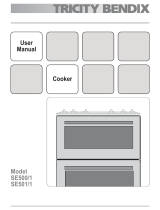 Tricity Bendix SE501/1S User manual
Tricity Bendix SE501/1S User manual
-
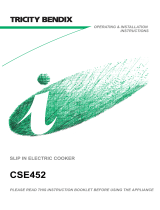 Tricity Bendix CSE452W User manual
Tricity Bendix CSE452W User manual
-
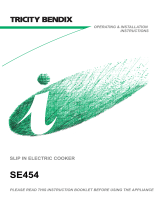 Tricity Bendix SE454SV User manual
Tricity Bendix SE454SV User manual
-
Zanussi-Electrolux ZKC6010W User manual
-
Electrolux SE501/1S User manual
-
 Tricity Bendix SE501SV User manual
Tricity Bendix SE501SV User manual
-
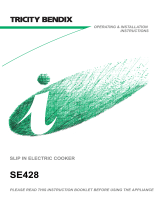 Tricity Bendix SE428X User manual
Tricity Bendix SE428X User manual
-
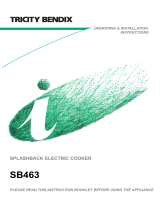 Tricity Bendix SB463BK User manual
Tricity Bendix SB463BK User manual
-
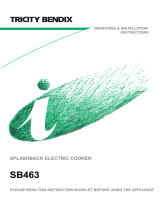 Tricity Bendix SB463 User manual
Tricity Bendix SB463 User manual
-
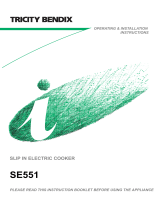 Tricity Bendix SE551W User manual
Tricity Bendix SE551W User manual
Other documents
-
Electrolux EKC6049X User manual
-
Electrolux EKC6049X User manual
-
Electrolux EKC6049X User manual
-
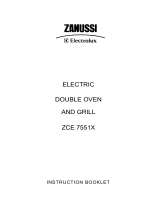 Zanussi - Electrolux ZCE7551X User manual
Zanussi - Electrolux ZCE7551X User manual
-
Zanussi ZKC6000W User manual
-
Zanussi ZKC 6000W User manual
-
Electra EL373W User manual
-
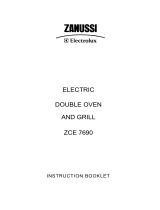 Zanussi - Electrolux ZCE 8021 User manual
Zanussi - Electrolux ZCE 8021 User manual
-
Zanussi-Electrolux ZCE5001X User manual
-
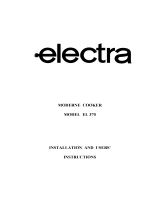 Electra Accessories EL 370 User manual
Electra Accessories EL 370 User manual






































